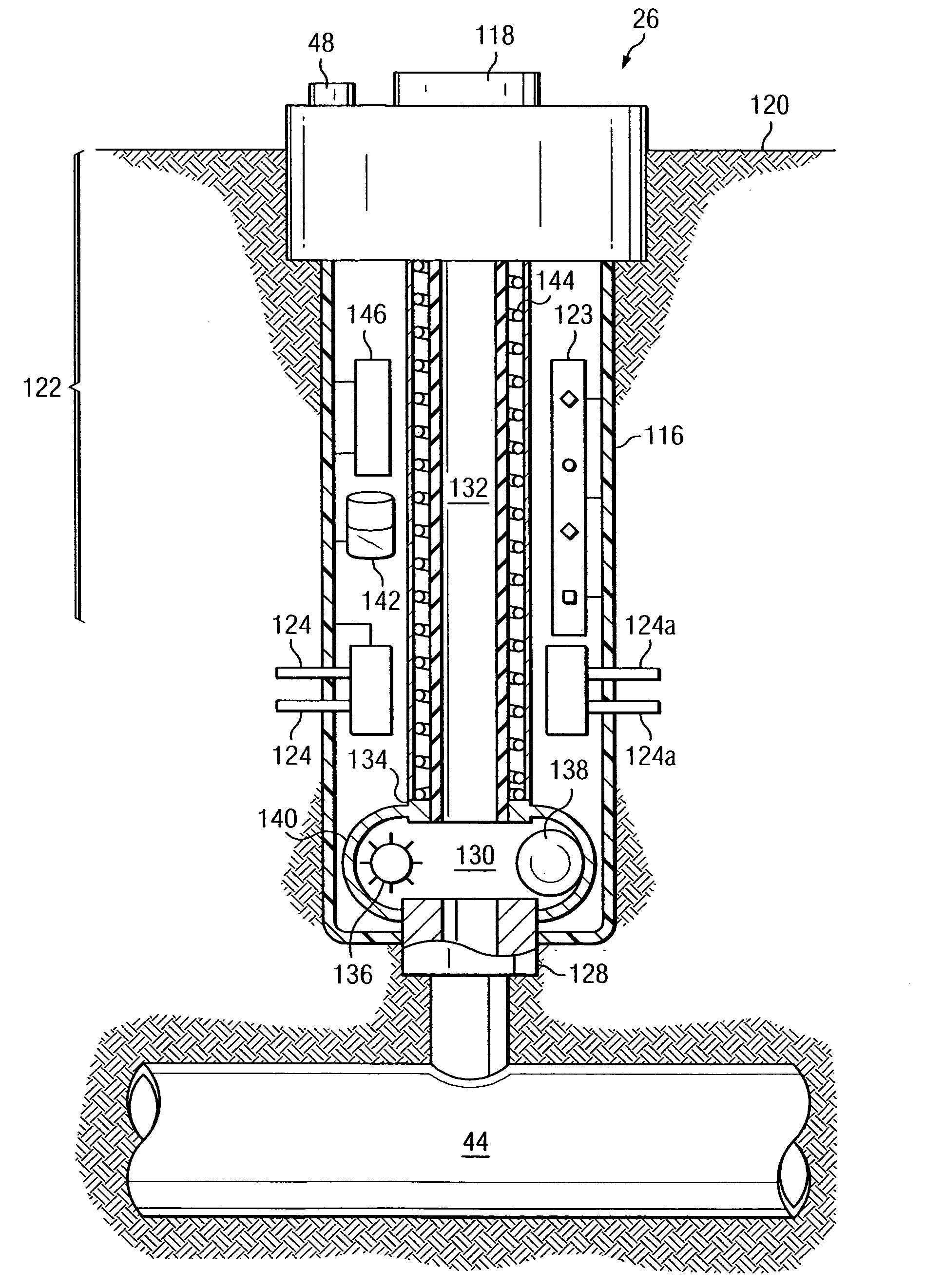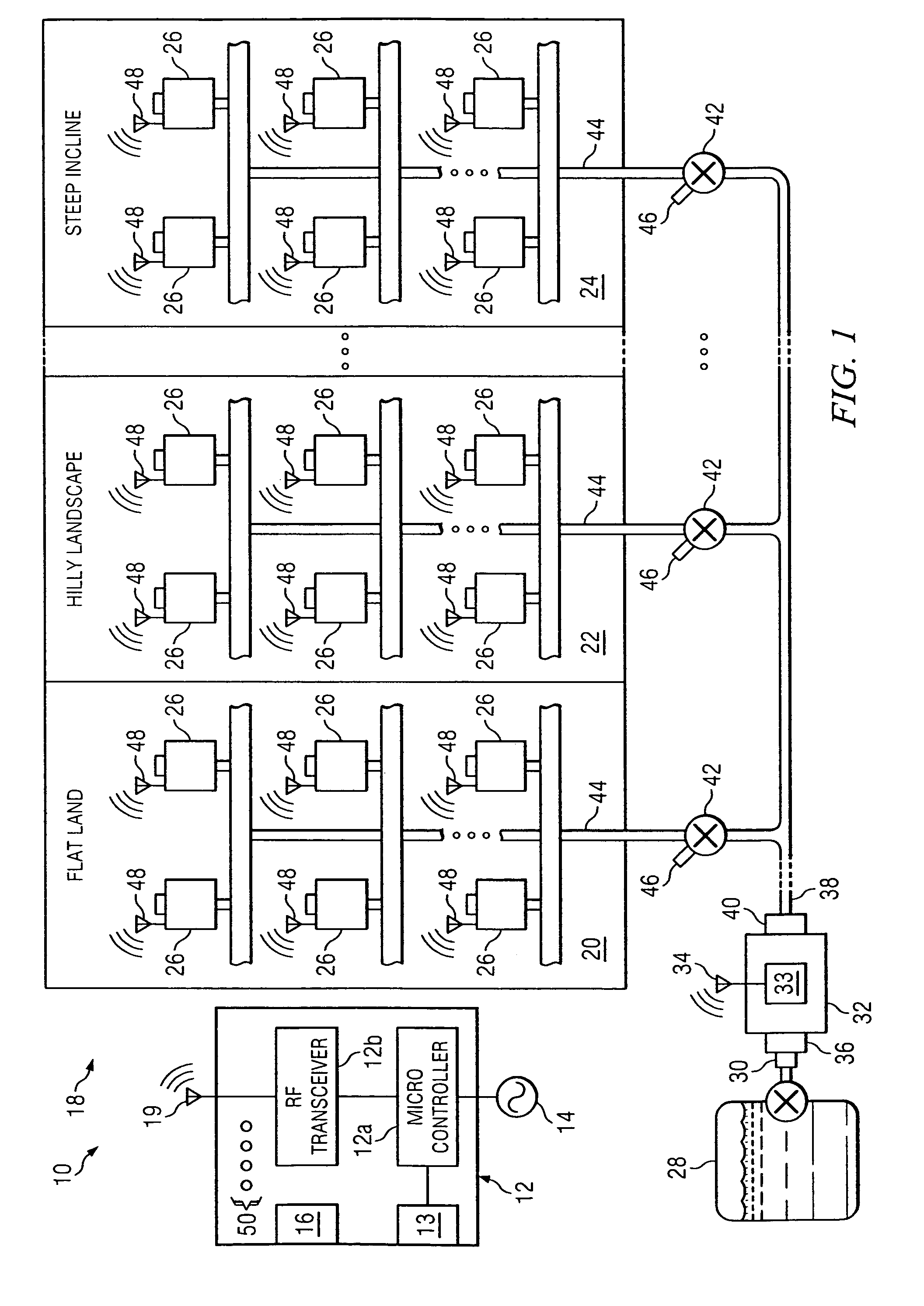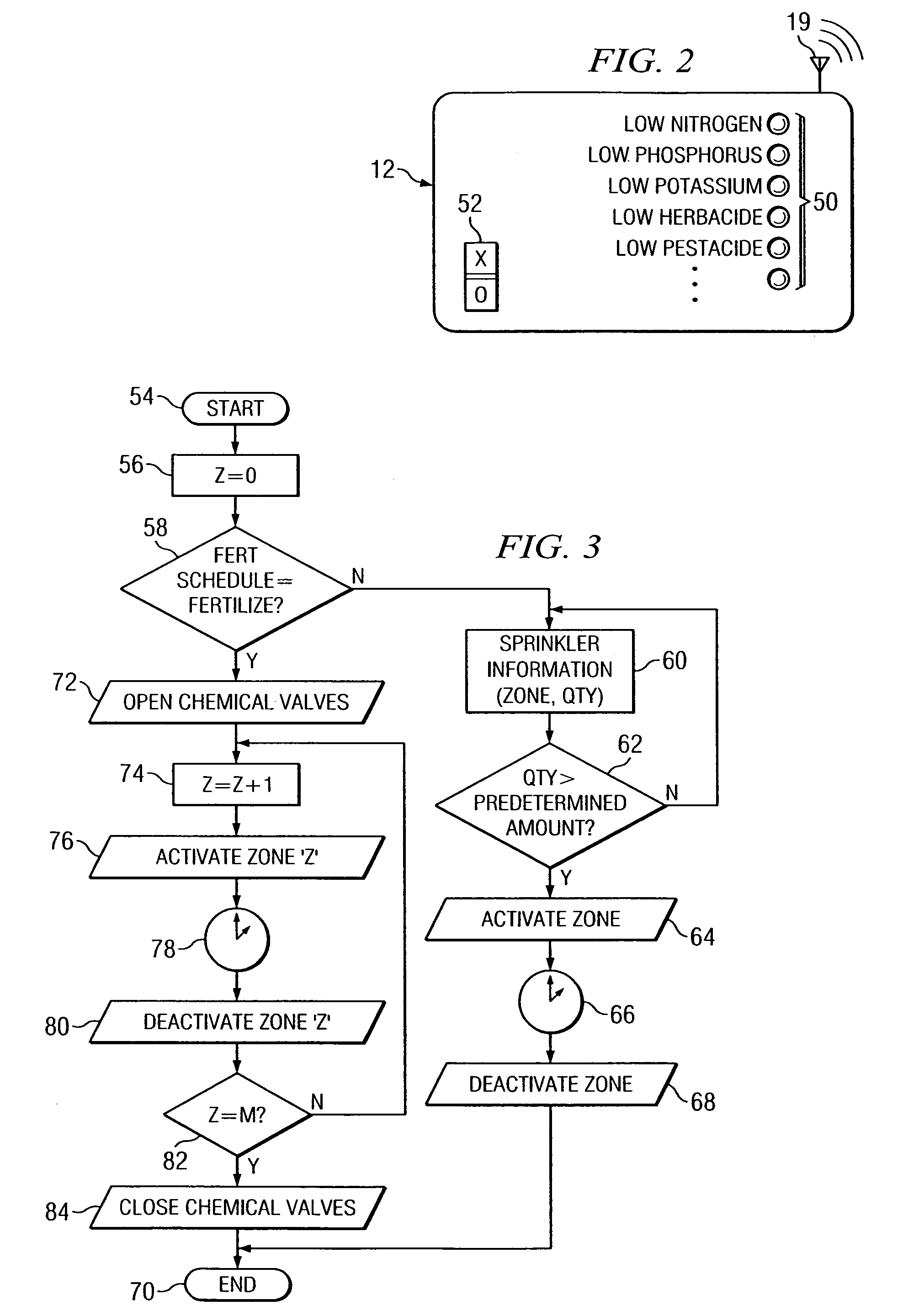Methods, systems and apparatuses for automated irrigation and chemical treatment
a technology of automatic irrigation and chemical treatment, applied in the field of lawn care systems, can solve the problems of inability to gauge whether the subject field is sufficiently saturated, inability to save water, so as to reduce or eliminate reduce or eliminate the effect of redundant or inadequate chemical applications
- Summary
- Abstract
- Description
- Claims
- Application Information
AI Technical Summary
Benefits of technology
Problems solved by technology
Method used
Image
Examples
Embodiment Construction
[0024]In the description that follows, like elements are marked throughout the specification and drawings with the same reference numerals, respectively. The drawing figures are not necessarily to scale and certain elements may be shown in somewhat generalized or schematic form in the interest of clarity and conciseness. Certain routine steps, in flow charts, normally included in the operation of the present invention have been omitted in the interest of conciseness. However, the steps which include methodology in accordance with the present invention are indicated in the charts. As is conventional, the letters Y and N designate “yes” and “no”, respectively.
[0025]The automated irrigation and chemical treatment system 10 of the present invention, depicted in FIG. 1, is controlled by a user programmable control unit 12 which includes a programmable micro controller 12a operably connected to a suitable wireless transmitter / receiver unit 12b. A user may program the control unit 12 via a...
PUM
 Login to View More
Login to View More Abstract
Description
Claims
Application Information
 Login to View More
Login to View More - R&D
- Intellectual Property
- Life Sciences
- Materials
- Tech Scout
- Unparalleled Data Quality
- Higher Quality Content
- 60% Fewer Hallucinations
Browse by: Latest US Patents, China's latest patents, Technical Efficacy Thesaurus, Application Domain, Technology Topic, Popular Technical Reports.
© 2025 PatSnap. All rights reserved.Legal|Privacy policy|Modern Slavery Act Transparency Statement|Sitemap|About US| Contact US: help@patsnap.com



